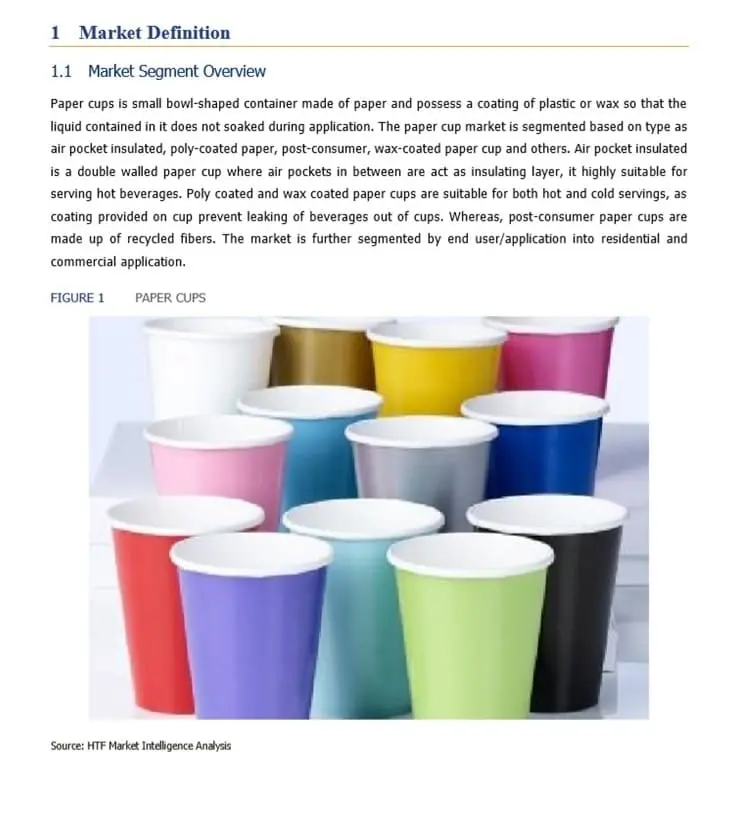- +1 551 333 1547
- +44 2070 979277
- live:skype_chat
About Indoor LED Lighting
LED (light emitting diode) indoor lighting utilizes LED lamps to illuminate interior spaces in residential, commercial, industrial, and agricultural buildings. Compared to incandescent and fluorescent lamps, LED lighting is more energy-efficient, versatile, and has a longer lifespan. LED lighting products can produce light up to 90% more efficiently than incandescent light bulbs. LEDs work by passing an electrical current through a microchip, which illuminates tiny light sources. A heat sink absorbs the heat produced, preventing overheating. LEDs are directional light sources, emitting light in a specific direction, which increases efficiency by reducing the need for reflectors and diffusers. They are also very small and durable and can be manufactured in various colors. To produce white light, different color LEDs are combined or covered with a phosphor material. | Attributes | Details |
|---|---|
| Study Period | 2020-2032 |
| Base Year | 2024 |
| Unit | Value (USD Million) |
Established and emerging Manufacturers should take a closer view at their existing organizations and reinvent traditional business and operating models to adapt to the future.
Philips Lighting Holding B.V. (Netherlands), General Electric Company (United States), OSRAM Licht AG (Germany), Cree, Inc. (United States), Cooper Industries, Inc. (Ireland), Virtual Extension (Israel), Dialight plc (United Kingdom), Zumtobel Group AG (Austria), Samsung (South Korea) and Sharp Corporation (Japan) are some of the key players that are part of study coverage.
Segmentation Overview
AMA Research has segmented the market of India Indoor LED Lighting market by Type (Lamps {A-Lamps, T-Lamps, Others} and Luminaires {Streetlights, Downlights, Troffers, Others}) and Region. On the basis of geography, the market of Indoor LED Lighting has been segmented into
About Approach
To evaluate and validate the market size various sources including primary and secondary analysis is utilized. AMA Research follows regulatory standards such as NAICS/SIC/ICB/TRCB, to have a better understanding of the market. The market study is conducted on basis of more than 200 companies dealing in the market regional as well as global areas with the purpose to understand the companies positioning regarding the market value, volume, and their market share for regional as well as global. Further to bring relevance specific to any niche market we set and apply a number of criteria like Geographic Footprints, Regional Segments of Revenue, Operational Centres, etc. The next step is to finalize a team (In-House + Data Agencies) who then starts collecting C & D level executives and profiles, Industry experts, Opinion leaders, etc., and work towards appointment generation.
The primary research is performed by taking the interviews of executives of various companies dealing in the market as well as using the survey reports, research institute, and latest research reports. Meanwhile, the analyst team keeps preparing a set of questionnaires, and after getting the appointee list; the target audience is then tapped and segregated with various mediums and channels that are feasible for making connections that including email communication, telephonic, skype, LinkedIn Group & InMail, Community Forums, Community Forums, open Survey, SurveyMonkey, etc.
Report Objectives / Segmentation Covered
By Type
- Lamps {A-Lamps, T-Lamps, Others}
- Luminaires {Streetlights, Downlights, Troffers, Others}
By End-user Industry
- Commercial
- Residential
- Industrial
- Others
By Installation Type
- New
- Retrofit
By Sales Channel
- Online
- Offline
By Regions
- 1. Market Overview
- 1.1. Introduction
- 1.2. Scope/Objective of the Study
- 1.2.1. Research Objective
- 2. Executive Summary
- 2.1. Introduction
- 3. Market Factor Analysis
- 3.1. Porters Five Forces
- 3.2. Supply/Value Chain
- 3.3. PESTEL analysis
- 3.4. Market Entropy
- 3.5. Patent/Trademark Analysis
- 4. India Indoor LED Lighting, by Type, End-user Industry, Installation Type and Sales Channel (value) (2019-2024)
- 4.1. Introduction
- 4.2. India Indoor LED Lighting (Value)
- 4.2.1. India Indoor LED Lighting by: Type (Value)
- 4.2.1.1. Lamps {A-Lamps, T-Lamps, Others}
- 4.2.1.2. Luminaires {Streetlights, Downlights, Troffers, Others}
- 4.2.2. India Indoor LED Lighting by: End-user Industry (Value)
- 4.2.2.1. Commercial
- 4.2.2.2. Residential
- 4.2.2.3. Industrial
- 4.2.2.4. Others
- 4.2.3. India Indoor LED Lighting by: Installation Type (Value)
- 4.2.3.1. New
- 4.2.3.2. Retrofit
- 4.2.4. India Indoor LED Lighting by: Sales Channel (Value)
- 4.2.4.1. Online
- 4.2.4.2. Offline
- 4.2.1. India Indoor LED Lighting by: Type (Value)
- 5. Indoor LED Lighting: Manufacturers/Players Analysis
- 5.1. Competitive Landscape
- 5.1.1. Market Share Analysis
- 5.1.1.1. Top 3
- 5.1.1.2. Top 5
- 5.1.1. Market Share Analysis
- 5.2. Peer Group Analysis (2024)
- 5.3. BCG Matrix
- 5.4. Company Profile
- 5.4.1. Philips Lighting Holding B.V. (Netherlands)
- 5.4.1.1. Business Overview
- 5.4.1.2. Products/Services Offerings
- 5.4.1.3. Financial Analysis
- 5.4.1.4. SWOT Analysis
- 5.4.2. General Electric Company (United States)
- 5.4.2.1. Business Overview
- 5.4.2.2. Products/Services Offerings
- 5.4.2.3. Financial Analysis
- 5.4.2.4. SWOT Analysis
- 5.4.3. OSRAM Licht AG (Germany)
- 5.4.3.1. Business Overview
- 5.4.3.2. Products/Services Offerings
- 5.4.3.3. Financial Analysis
- 5.4.3.4. SWOT Analysis
- 5.4.4. Cree, Inc. (United States)
- 5.4.4.1. Business Overview
- 5.4.4.2. Products/Services Offerings
- 5.4.4.3. Financial Analysis
- 5.4.4.4. SWOT Analysis
- 5.4.5. Cooper Industries, Inc. (Ireland)
- 5.4.5.1. Business Overview
- 5.4.5.2. Products/Services Offerings
- 5.4.5.3. Financial Analysis
- 5.4.5.4. SWOT Analysis
- 5.4.6. Virtual Extension (Israel)
- 5.4.6.1. Business Overview
- 5.4.6.2. Products/Services Offerings
- 5.4.6.3. Financial Analysis
- 5.4.6.4. SWOT Analysis
- 5.4.7. Dialight plc (United Kingdom)
- 5.4.7.1. Business Overview
- 5.4.7.2. Products/Services Offerings
- 5.4.7.3. Financial Analysis
- 5.4.7.4. SWOT Analysis
- 5.4.8. Zumtobel Group AG (Austria)
- 5.4.8.1. Business Overview
- 5.4.8.2. Products/Services Offerings
- 5.4.8.3. Financial Analysis
- 5.4.8.4. SWOT Analysis
- 5.4.9. Samsung (South Korea)
- 5.4.9.1. Business Overview
- 5.4.9.2. Products/Services Offerings
- 5.4.9.3. Financial Analysis
- 5.4.9.4. SWOT Analysis
- 5.4.10. Sharp Corporation (Japan)
- 5.4.10.1. Business Overview
- 5.4.10.2. Products/Services Offerings
- 5.4.10.3. Financial Analysis
- 5.4.10.4. SWOT Analysis
- 5.4.1. Philips Lighting Holding B.V. (Netherlands)
- 5.1. Competitive Landscape
- 6. India Indoor LED Lighting Sale, by Type, End-user Industry, Installation Type and Sales Channel (value) (2027-2032)
- 6.1. Introduction
- 6.2. India Indoor LED Lighting (Value)
- 6.2.1. India Indoor LED Lighting by: Type (Value)
- 6.2.1.1. Lamps {A-Lamps, T-Lamps, Others}
- 6.2.1.2. Luminaires {Streetlights, Downlights, Troffers, Others}
- 6.2.2. India Indoor LED Lighting by: End-user Industry (Value)
- 6.2.2.1. Commercial
- 6.2.2.2. Residential
- 6.2.2.3. Industrial
- 6.2.2.4. Others
- 6.2.3. India Indoor LED Lighting by: Installation Type (Value)
- 6.2.3.1. New
- 6.2.3.2. Retrofit
- 6.2.4. India Indoor LED Lighting by: Sales Channel (Value)
- 6.2.4.1. Online
- 6.2.4.2. Offline
- 6.2.1. India Indoor LED Lighting by: Type (Value)
- 7. Appendix
- 7.1. Acronyms
- 8. Methodology and Data Source
- 8.1. Methodology/Research Approach
- 8.1.1. Research Programs/Design
- 8.1.2. Market Size Estimation
- 8.1.3. Market Breakdown and Data Triangulation
- 8.2. Data Source
- 8.2.1. Secondary Sources
- 8.2.2. Primary Sources
- 8.3. Disclaimer
- 8.1. Methodology/Research Approach
List of Tables
- Table 1. Indoor LED Lighting: by Type(USD Million)
- Table 2. Indoor LED Lighting: by End-user Industry(USD Million)
- Table 3. Indoor LED Lighting: by Installation Type(USD Million)
- Table 4. Indoor LED Lighting: by Sales Channel(USD Million)
- Table 5. Company Basic Information, Sales Area and Its Competitors
- Table 6. Company Basic Information, Sales Area and Its Competitors
- Table 7. Company Basic Information, Sales Area and Its Competitors
- Table 8. Company Basic Information, Sales Area and Its Competitors
- Table 9. Company Basic Information, Sales Area and Its Competitors
- Table 10. Company Basic Information, Sales Area and Its Competitors
- Table 11. Company Basic Information, Sales Area and Its Competitors
- Table 12. Company Basic Information, Sales Area and Its Competitors
- Table 13. Company Basic Information, Sales Area and Its Competitors
- Table 14. Company Basic Information, Sales Area and Its Competitors
- Table 15. Indoor LED Lighting: by Type(USD Million)
- Table 16. Indoor LED Lighting: by End-user Industry(USD Million)
- Table 17. Indoor LED Lighting: by Installation Type(USD Million)
- Table 18. Indoor LED Lighting: by Sales Channel(USD Million)
- Table 19. Research Programs/Design for This Report
- Table 20. Key Data Information from Secondary Sources
- Table 21. Key Data Information from Primary Sources
List of Figures
- Figure 1. Porters Five Forces
- Figure 2. Supply/Value Chain
- Figure 3. PESTEL analysis
- Figure 4. India Indoor LED Lighting: by Type USD Million (2019-2024)
- Figure 5. India Indoor LED Lighting: by End-user Industry USD Million (2019-2024)
- Figure 6. India Indoor LED Lighting: by Installation Type USD Million (2019-2024)
- Figure 7. India Indoor LED Lighting: by Sales Channel USD Million (2019-2024)
- Figure 8. India Indoor LED Lighting share by Players 2024 (%)
- Figure 9. India Indoor LED Lighting share by Players (Top 3) 2024(%)
- Figure 10. India Indoor LED Lighting share by Players (Top 5) 2024(%)
- Figure 11. BCG Matrix for key Companies
- Figure 12. Philips Lighting Holding B.V. (Netherlands) Revenue, Net Income and Gross profit
- Figure 13. Philips Lighting Holding B.V. (Netherlands) Revenue: by Geography 2024
- Figure 14. General Electric Company (United States) Revenue, Net Income and Gross profit
- Figure 15. General Electric Company (United States) Revenue: by Geography 2024
- Figure 16. OSRAM Licht AG (Germany) Revenue, Net Income and Gross profit
- Figure 17. OSRAM Licht AG (Germany) Revenue: by Geography 2024
- Figure 18. Cree, Inc. (United States) Revenue, Net Income and Gross profit
- Figure 19. Cree, Inc. (United States) Revenue: by Geography 2024
- Figure 20. Cooper Industries, Inc. (Ireland) Revenue, Net Income and Gross profit
- Figure 21. Cooper Industries, Inc. (Ireland) Revenue: by Geography 2024
- Figure 22. Virtual Extension (Israel) Revenue, Net Income and Gross profit
- Figure 23. Virtual Extension (Israel) Revenue: by Geography 2024
- Figure 24. Dialight plc (United Kingdom) Revenue, Net Income and Gross profit
- Figure 25. Dialight plc (United Kingdom) Revenue: by Geography 2024
- Figure 26. Zumtobel Group AG (Austria) Revenue, Net Income and Gross profit
- Figure 27. Zumtobel Group AG (Austria) Revenue: by Geography 2024
- Figure 28. Samsung (South Korea) Revenue, Net Income and Gross profit
- Figure 29. Samsung (South Korea) Revenue: by Geography 2024
- Figure 30. Sharp Corporation (Japan) Revenue, Net Income and Gross profit
- Figure 31. Sharp Corporation (Japan) Revenue: by Geography 2024
- Figure 32. India Indoor LED Lighting: by Type USD Million (2027-2032)
- Figure 33. India Indoor LED Lighting: by End-user Industry USD Million (2027-2032)
- Figure 34. India Indoor LED Lighting: by Installation Type USD Million (2027-2032)
- Figure 35. India Indoor LED Lighting: by Sales Channel USD Million (2027-2032)
List of companies from research coverage that are profiled in the study
- Philips Lighting Holding B.V. (Netherlands)
- General Electric Company (United States)
- OSRAM Licht AG (Germany)
- Cree, Inc. (United States)
- Cooper Industries, Inc. (Ireland)
- Virtual Extension (Israel)
- Dialight plc (United Kingdom)
- Zumtobel Group AG (Austria)
- Samsung (South Korea)
- Sharp Corporation (Japan)
Select User Access Type
Key Highlights of Report
Feb 2025
213 Pages
62 Tables
Base Year: 2024
Coverage: 15+ Companies; 18 Countries
Request Sample Pages
Budget constraints? Get in touch with us for special pricing
Check Discount NowTalk to Our Experts
Want to Customize Study?
"We employ Market statistics, Industry benchmarking, Patent analysis, and Technological Insights to derive requirements and provide customize scope of work."
Frequently Asked Questions (FAQ):
The standard version of the report profiles players such as Philips Lighting Holding B.V. (Netherlands), General Electric Company (United States), OSRAM Licht AG (Germany), Cree, Inc. (United States), Cooper Industries, Inc. (Ireland), Virtual Extension (Israel), Dialight plc (United Kingdom), Zumtobel Group AG (Austria), Samsung (South Korea) and Sharp Corporation (Japan) etc.
The Study can be customized subject to feasibility and data availability. Please connect with our sales representative for further information.
"" is seen as one of major influencing trends for Indoor LED Lighting Market during projected period 2024-2032.
The Indoor LED Lighting market study includes a random mix of players, including both market leaders and some top growing emerging players. Connect with our sales executive to get a complete company list in our research coverage.



